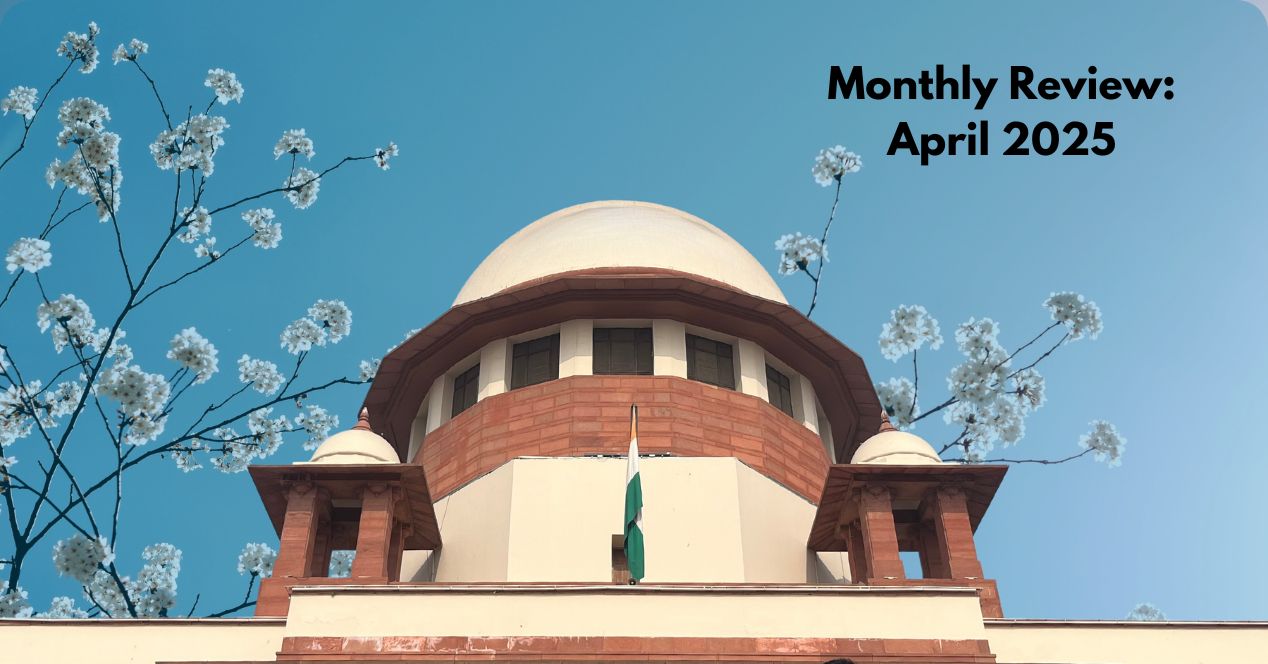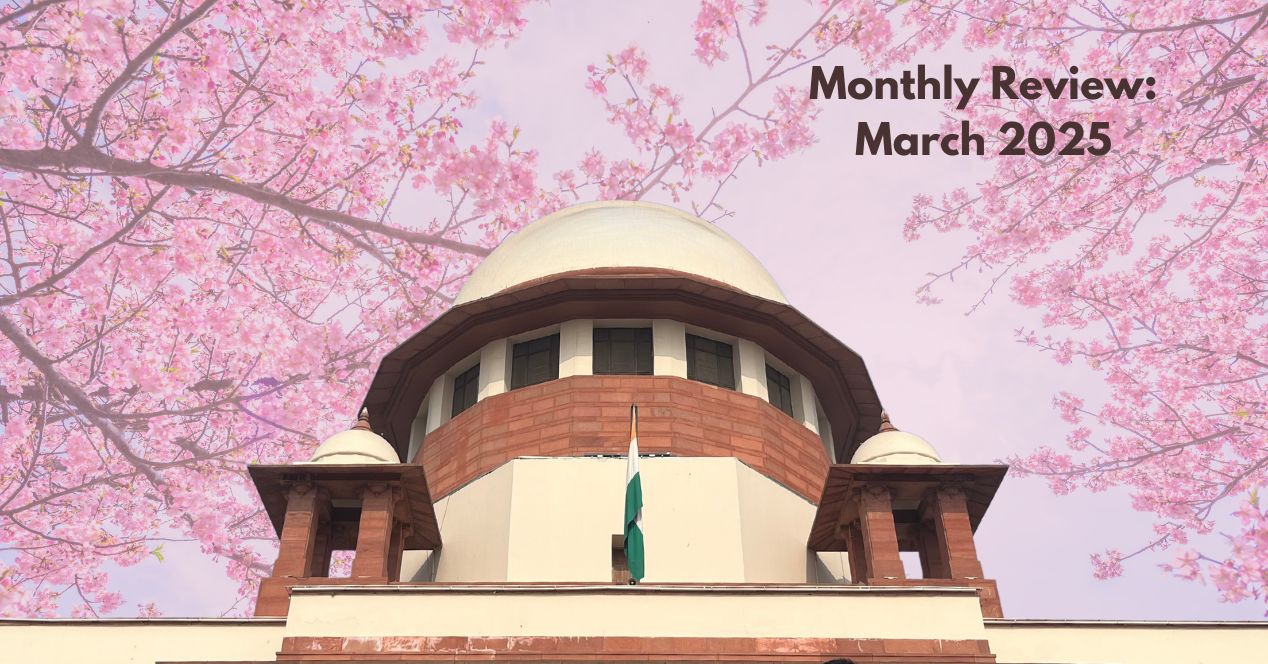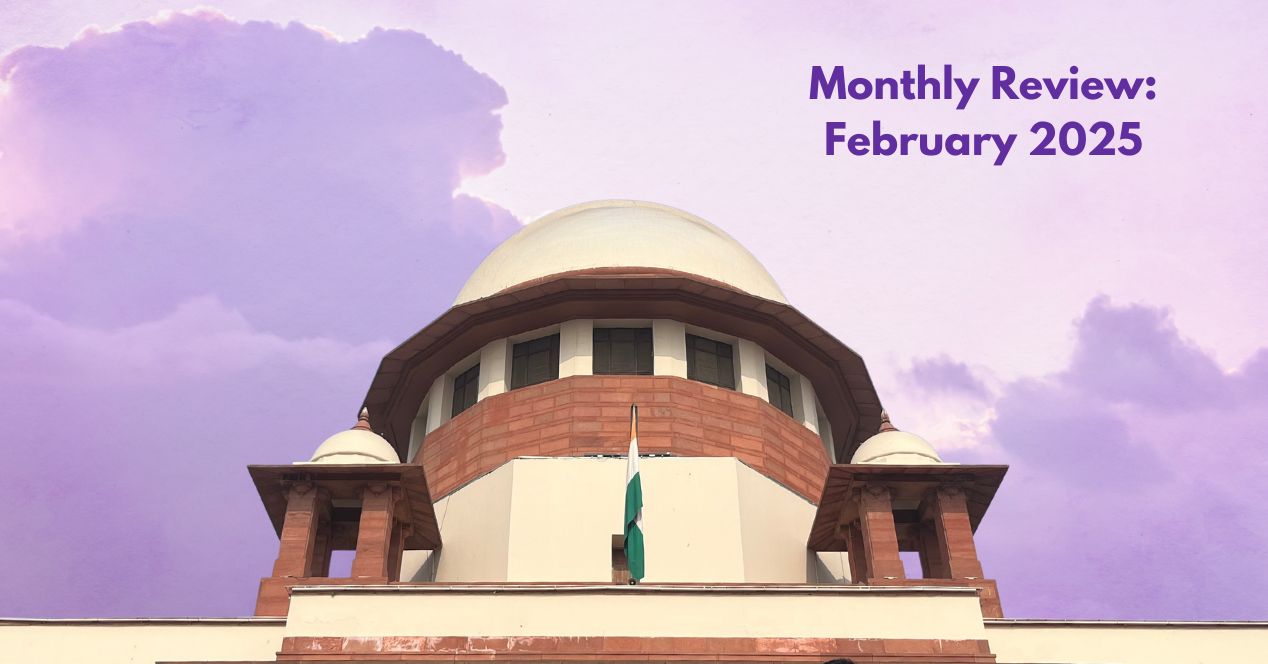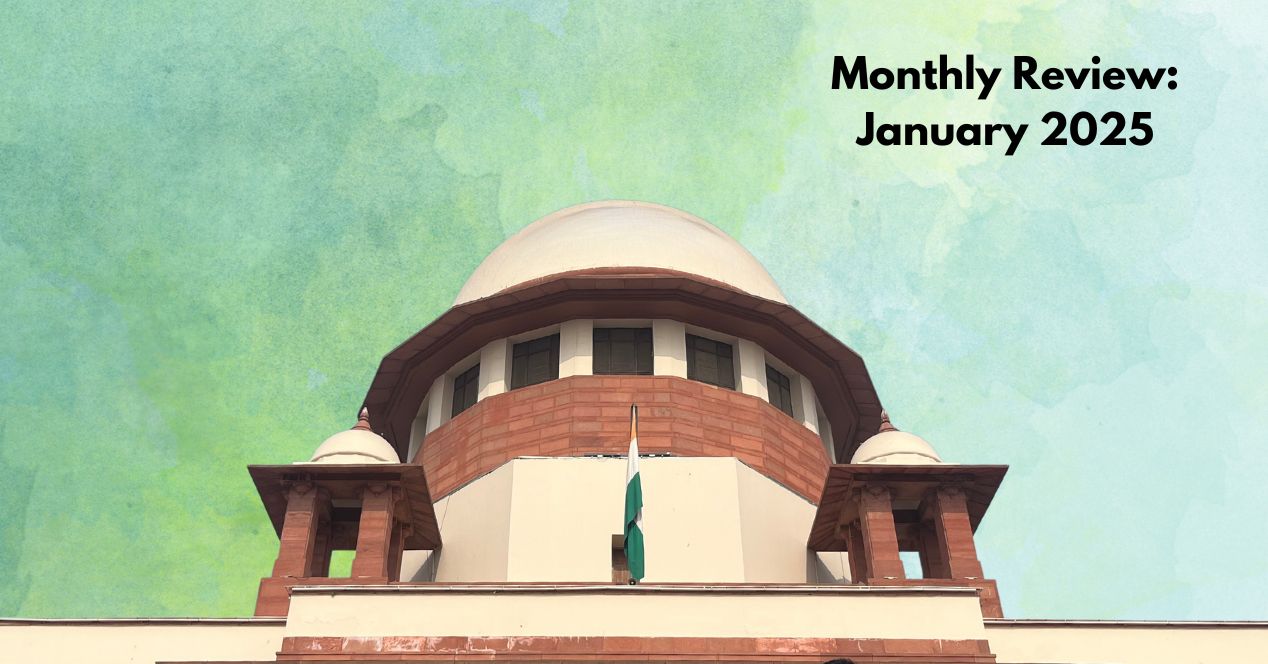Analysis
Monthly Review: May 2025
The Court saw three appointments, two retirements and, for the first time, released key data on judicial appointments.
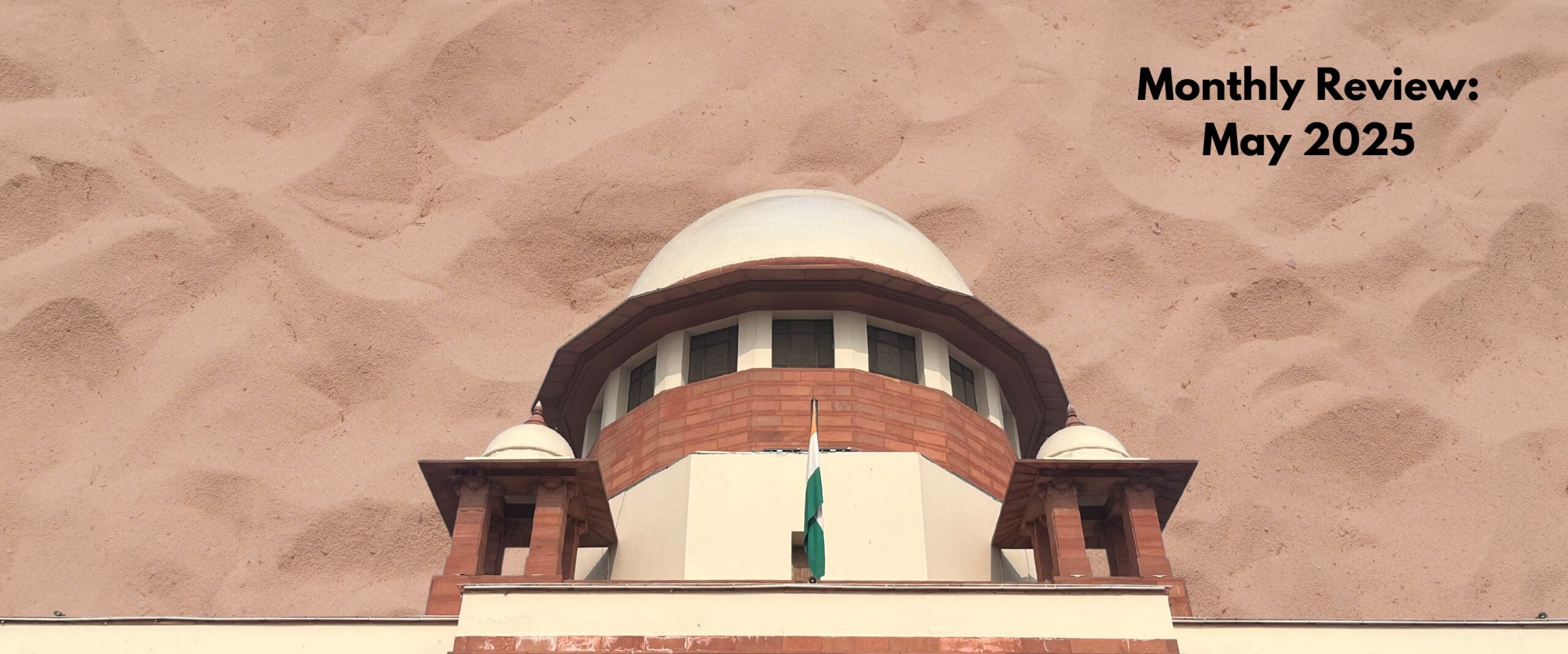
May 2025 marked the beginning of Justice B.R. Gavai’s six-month long tenure as the Chief Justice of India. It also saw the retirement of CJI Sanjiv Khanna and Justice A.S. Oka. The Court had a ceremonial bench for Justice B.M. Trivedi who will retire on 9 June.
The Court concluded hearings in the Waqf challenges where petitioners have sought an interim stay on the provisions.
Lastly, it saw the appointments of three new judges bringing the Court to its fully sanctioned strength of 34 judges.
The Waqf Challenges
On 22 May, a bench of CJI Gavai and A.G. Masih reserved judgement in petitions seeking an interim stay on provisions in the Waqf Amendment Act, 2025. Petitioners argued that the law aims to do a “wholesale takeover” of waqf properties. The Union argued that registered waqf properties would not be affected under the law.
Our commentary by Rutba Peerzada and Muhammad Mutahhar Amin argues that the overall scheme of the Act undermines religious autonomy of the Muslim community.
Chief Justice Sanjiv Khanna retires with a quiet legacy
On 13 May, Sanjiv Khanna retired as the 51st CJI after a brief tenure of six months. During this time, he had been a part of 497 benches and had authored 177 judgements.
We published a list of his top 10 judgements when he was at the top court.
One of his first administrative decisions was to temporarily pause regular hearings and only take up miscellaneous matters. Among other administrative developments, he had moved the mentioning of urgent fresh matters online.
Our commentary by Advocates Balaji Srinivasan and Rohan Dewan suggests that CJI Khanna’s administrative decisions left a mark despite a brief tenure at the top court. Advocate Kaleeswaram Raj in his commentary writes that CJI Khanna, although committed to the Constitution, did not directly confront the executive during his tenure at the Supreme Court.
We also published a study which revealed that the Union accepted 76 percent names recommended by the Khanna-led Collegium.
First Buddhist Chief Justice: B.R. Gavai
On 14 May, B.R. Gavai took oath as the 52nd Chief Justice of India. He is the first buddhist and second dalit Chief Justice. His first week in the Court hints at a demanding tenure ahead. For instance, on his first day the President referred 14 questions pertaining to the powers of the Governor and President around the assent of state bills.
Following his appointment, the Supreme Court, on 16 May, released a list of benches that will be constituted during the Court’s “partial working days”. But is the renaming of vacation benches to partial working days enough to combat the feeling that the Court needs to be more ‘productive’? We explore this in our newsletter.
With his appointment, CJI Gavai now heads the Supreme Court Collegium. The Collegium now includes Justice Nagarathna, making her the fourth woman judge to serve on the panel.
Three new judges at the Supreme Court
On 26 May, the Collegium recommended the appointments of Justices N.V. Anjaria, Vijay Bishnoi and A.S. Chandurkar. Their appointment was notified by the Union on 29 May and they were sworn in on 30 May.
With their appointments, the regional representation of the Gujarat, Rajasthan and Bombay High Courts increased in the top court. Six out of 25 High Courts are not represented at the Supreme Court.
A stride towards transparency
On 5 May, the Supreme Court released three sets of documents revealing the process of appointments of High Court and Supreme Court judges, and a list of proposals approved by the Collegium for elevation to high courts during the period of November 2022 and May 2025. This was one of CJI Khanna’s last administrative decisions at the top court before his retirement. On the same day, 21 judges of the Supreme Court declared their assets. This was a month after reports revealed that the judges had resolved to declare their assets in the public domain.
14 familiar questions
On 13 May, President Droupadi Murmu sought the Court’s advisory opinion under Article 143 when it referred 14 questions relating to the assent of bills by the Governor and President under Articles 200 and 201. The reference came after members of the ruling party strongly criticised the Court’s Tamil Nadu Governor Judgement. The Court will have to set up a bench of minimum five-judges to answer the questions.
This was the 16th instance where the President invoked the Court’s advisory jurisdiction. There is a view that most of the referred questions have been answered by the top court in its Tamil Nadu decision. Our commentary authored by Mathew Idiculla analyses how the Court used constitutional history to determine that the Governor has no discretionary power over state bills.
The senior shuffle
On 13 May, a three-judge Bench altered the process of designating Senior Advocates in Jitender @ Kalla v State (NCT of Delhi). It abolished the points-based system for the evaluation of candidates and the Permanent Committee. While the Court held that the Permanent Secretariat, envisaged under Indira Jaising-I, would continue to process applications and collect data to enable the Full Court’s decision-making, it directed that no new designation processes is to be initiated until the Supreme Court and the High Courts formulate a new regime of rules and guidelines.
A sensitive exception
On 23 May, the Supreme Court exercised its inherent power under Article 142 to decline a 20-year jail sentence to a man convicted under the Protection of Children from Sexual Offences Act, 2012 (POCSO).
The Court noted that the adolescent victim, who was in a consensual relationship with the convict, had suffered emotional and financial hardships in securing his release. The Court noted that imprisoning the convict would worsen the victim’s life.
Tell me why
On 21 May, a Division Bench granted interim bail to Ashoka University professor Ali Khan Mahmudabad. He was arrested after he uploaded social media posts about Operation Sindoor. The Court clarified that the bail was to facilitate the investigation. It set up a three-member Special Investigation Team to look into the posts and “holistically” understand “the complexity of the phraseology” used by Mahmudabad.
Senior Advocate Kapil Sibal argued that there was no criminal intent on part of Mahmudabad, as the bench stated that he was engaged in “dog whistling”.
No tolerance towards contempt
On 30 May, the Supreme Court initiated suo moto contempt proceedings against journalist Ajay Shukla for his remarks against a senior judge in a YouTube video. The Court described his comments as “scandalous”, with the intention to undermine the judiciary. It ordered the video’s immediate removal.
(Keerthana B. is an intern at the Supreme Court Observer for the month of June 2025)

